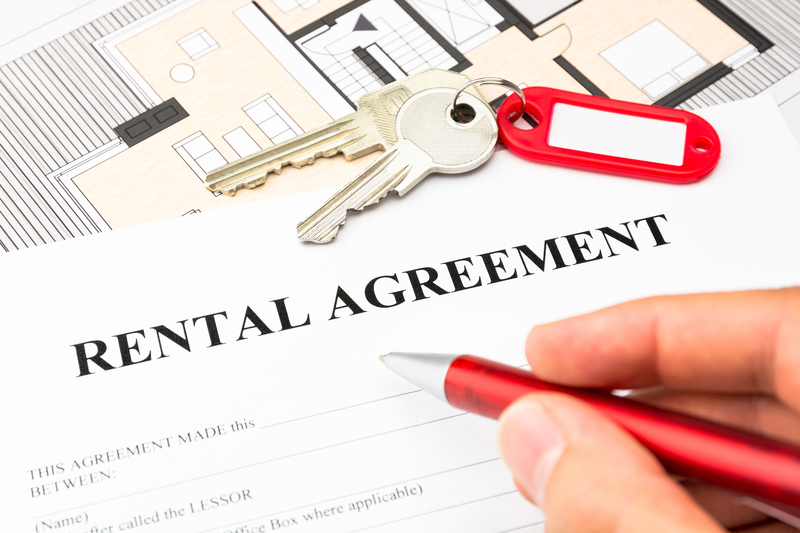The Right Equipment for Piano Moving and Why You Shouldn't Go It Alone
Moving a piano may seem like a daunting challenge, and for good reason. Pianos are not only expensive and delicate, but they are also exceptionally heavy and awkward to maneuver. Whether you own an upright, baby grand, or concert grand piano, ensuring a safe relocation requires specialized tools and expert handling. If you're considering a DIY move, it's vital to understand why hiring professional piano movers and using the right piano moving equipment is crucial for both the safety of your treasured instrument and your own well-being.

Understanding the Complexity of Piano Moving
Pianos are unlike any other household item. Their intricate structure--a combination of wood, metal, and over 10,000 moving parts--makes them uniquely vulnerable during a move. With weights ranging from 300 to over 1,200 pounds, even the smallest mistake can lead to serious injury or irreparable damage. Attempting to move a piano without the correct equipment and expertise spells trouble.
Types of Pianos and Their Moving Challenges
- Upright Piano: Bulkier and more top-heavy than they appear, requiring careful balancing.
- Baby Grand/Grand Piano: Awkward to maneuver due to their shape and weight distribution, often requiring partial disassembly.
- Digital Piano: While lighter, they can still be delicate and contain sensitive electronic components.
Essential Equipment for Safe Piano Moving
The right piano moving equipment can make the difference between a smooth, safe relocation and a disaster. Let's explore the most important tools professionals use:
1. Piano Dollies
Piano dollies are heavy-duty, four-wheel platforms specifically designed for piano moving. They can support significant weight and allow for smooth movement across floors. There are different types, such as:
- Upright Piano Dollies: Designed to fit under the base of most upright pianos for stability and easy steering.
- Grand Piano Dollies: Adjustable varieties that adapt to each leg, distributing weight evenly and reducing pressure on the instrument.
2. Piano Skid Boards
A piano skid board--also called a piano board--is essential for moving grand or baby grand pianos. Movers disassemble the piano's legs and pedals, carefully tipping the body onto the cushioned board. The piano is then securely wrapped and strapped, enabling safe lifting and movement.
3. Heavy-Duty Straps and Harnesses
- Proper lifting straps or harnesses help professional movers maintain control over the piano's weight and prevent slips or accidents.
- High-tension webbing and ratcheting mechanisms keep the piano tightly secured to dollies and boards, minimizing movement during transit.
4. Moving Blankets and Padding
Quality moving blankets and pads provide crucial protection from bumps, scratches, and temperature/humidity changes. Professionals use thick, padded materials to completely wrap the piano before moving.
5. Heavy-Duty Ramps
When stairs or uneven surfaces are involved, sturdy ramps are indispensable. Movers can roll heavy pianos up or down these ramps, minimizing the risk of dropping the instrument or causing property damage.
6. Professional Tools for Disassembly
- Special tools (like socket wrenches, screwdrivers, and Allen keys) are necessary for carefully removing piano legs, pedals, and music stands--especially for grand pianos.
- Professionals know the correct sequence and technique to avoid damaging fragile components.
Risks of DIY Piano Moving: Why It's a Bad Idea
While it may be tempting to save money by moving your piano yourself, the risks far outweigh the potential benefits. Below, we'll outline the main dangers you face when you attempt piano moving without professional help and the right equipment:
1. Risk of Injury
The immense weight and size of a piano make it incredibly easy to lose control, resulting in serious back, hand, or foot injuries. Without the proper piano moving equipment, even a team of strong friends can struggle, risking sprains, fractures, or worse.
2. Risk of Instrument Damage
- Delicate components (such as strings and hammers) are vulnerable to sudden movements or impacts.
- Cosmetic damage like chipped wood, scratches, and broken keys can reduce the piano's value and appearance.
- Pianos may even become unplayable after improper transport.
3. Risk to Your Home and Property
A dropped or scraped piano can gouge floors, crack door frames, and damage walls. Repairs to your home may cost more than hiring professionals in the first place.
4. Lack of Insurance
Professional movers are insured against accidents. If you damage your piano (or your home) during a DIY move, you'll be responsible for all repair or replacement costs. Trying to claim on your homeowner's insurance for self-inflicted damage is rarely straightforward.
How Professional Piano Movers Make a Difference
Entrusting your piano move to specialists offers major advantages:
- Expertise: Professional movers have extensive training and experience with all types of pianos.
- Specialized Equipment: They come equipped with the best piano dollies, skid boards, harnesses, and padding.
- Teamwork: Pianos never move with fewer than two (and often up to four) experienced handlers. A coordinated team is essential for maneuvering around stairs, corners, and doorways.
- Insurance and Peace of Mind: Your investment is protected should anything go awry.
- Time and Stress Savings: The process is faster and safer, freeing you to focus on other aspects of your move.
The Professional Piano Moving Process
Most pro piano movers follow these steps:
- Initial Assessment: Measuring and planning routes, identifying obstacles, and selecting the appropriate equipment for piano moving.
- Piano Preparation: Wrapping with blankets, securing with straps, and (for grands) disassembling legs and pedals.
- Safe Transfer: Carefully placing the piano on the correct dolly or skid board, using ramps for stairs or elevation changes.
- Transit: Loading the piano onto a vehicle designed for moving heavy, fragile items. Proper strapping prevents movement during the drive.
- Reassembly and Placement: On arrival, the team reverses the process, reassembling the instrument and positioning it exactly where you want it.
Additional Tips: How to Prepare for a Professional Piano Move
Even when hiring pros, you can help ensure a smooth process:
- Measure Doorways and Hallways: Identify tight spaces or obstacles in advance and notify the movers.
- Clear the Path: Remove rugs, furniture, or loose items that could trip movers or impede movement.
- Communicate: Let movers know about stairs, narrow turns, or tricky transitions so they can bring the right equipment for piano moving.
- Prepare the Destination: Ensure the new piano location is accessible and climate-controlled to protect your instrument long-term.
Common Questions About Piano Moving Equipment
Do regular moving dollies work for pianos?
No. Ordinary dollies lack the strength and stability needed for such heavy, unbalanced loads. Using the wrong gear raises the risk of a catastrophic accident. Only professional-grade piano dollies and boards should be used.
Can I rent piano moving equipment myself?
Some companies rent out the right piano moving equipment, but without training and experience, you may still struggle to use it safely. It's always safer and ultimately more cost-effective to hire full-service piano movers.
Is it necessary to use ramps?
Ramps are crucial for moving over steps or elevation changes. Don't attempt to lift a piano over stairs using brute strength--use proper ramps and guidance from experts.

Conclusion: Don't Take Risks with Piano Moving
Your piano is more than just a musical instrument--it's an investment and a cherished possession. When it comes time to move it, don't cut corners. The risks of injury, damage, or costly mistakes far outweigh the savings from a DIY job. With the right piano moving equipment and a seasoned professional team, you can enjoy peace of mind and ensure your piano arrives safe, sound, and ready to play in its new home.
Remember: Proper planning, special piano moving tools, and expert knowledge are the keys to a successful piano move. Don't go it alone--trust qualified piano movers for this delicate task.
Related Resources
For professional piano moving services, always research local providers, check their reviews and credentials, and ask about their insurance and equipment. The safety of your piano is worth every penny invested in experience and the right gear.



